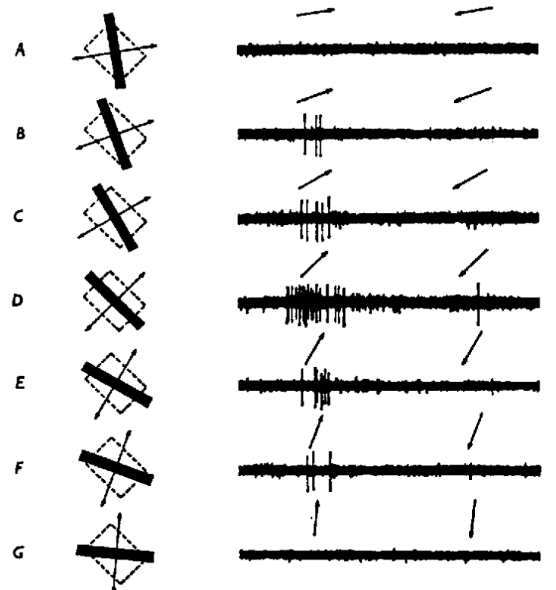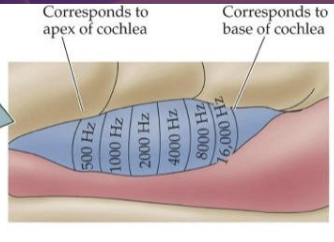Topic 05 - Critical Periods
1/11
There's no tags or description
Looks like no tags are added yet.
Name | Mastery | Learn | Test | Matching | Spaced |
|---|
No study sessions yet.
12 Terms
Critical Period vs Sensitive period
The critical period = brief window when the system is highly plastic and wiring becomes permanently optimized
Highly flexible time in development after birth
The environment strongly determines how the brain is configured
Some existing connections are reinforced, others are destroyed
Not always about pruning or connection growth, there is a capacity for both direction
“Use it or lose it” is applicable
if environmental inputs of particular qualities are not experienced, those connections may be deleted or not even formed to begin with, causing a deficit in that organism to experience them after the critical period has close
Sensitive periods
formations can happen after the sensitive period closes, but the sensitive period means that you have more flexibility. Afterward, there's less, but still some flexibility, when we talk about sensitive periods
Current Theories about critical periods in various regions
Visual input early in life is vital in developing the visual cortex
In humans, the first 6 weeks after birth determine the adult pattern
Competition between inputs from the 2 eyes during the critical period determines adult visual function
Somatosensory (touch input from whispers in newborn rats alters later behaviour
Auditory input in rats and owls can be changed during, but not after, critical period
Primary cortex areas (primary auditory, visual…
Language input may be related to plasticity or critical periods in the auditory cortex
Evidence to support a critical period of vulnerability in the visual system (Kittens)
Kittens are born blind; vision develops ~10 days after birth
Orientation + ocular dominance columns are present early but require visual experience
Orientation cells respond broadly (population coding)
Monocular deprivation during early life → cortex shifts to favor the open eye
Deprived eye loses cortical representation only during the critical period
Shows: early visual system has a time-limited window of high plasticity; unused inputs get ignored
Visual systems and Critical period
Visual system is mostly pre-wired before birth: layers + basic architecture already formed
After eyes open, experience refines connections, strengthening useful pathways and pruning others
Early-life visual input is required to make the cortex efficient and stable for the rest of life
Hubel & Wiesel showed how both nature (innate wiring) and nurture (experience) shape visual function
Studied cats/monkeys because their visual systems are organized similarly to humans
Different primary visual cortex (V1) cells prefer different lines
Simple Cells
Prefer a specific location, orientation (tilt), and size/length
If any feature is “off,” firing decreases
Feed into complex cells
Spatial summation: multiple simple cells converge onto a complex cell
Complex Cells
Care about orientation, but location does not matter
Respond if the line with the correct tilt appears anywhere in their receptive field
Hypercomplex Cells (
Prefer orientation + motion/direction of the line
Sensitive to the movement of a bar across their receptive field
Respond to line endings and the relative size of the bar

V1 direction & movement preference (Diagram description + [points)
The receptive field of this complex cell is shown as the dotted, tilted rectangle.
The black bar is a line of white light with a specific orientation presented on the retina.
The arrow shows the direction of motion of that bar as it moves across the receptive field.
Panels A–G illustrate how the neuron’s firing changes when the bar has different orientations relative to the receptive field.
Key Points
The number of action potentials reflects how close the line is to the cell’s preferred orientation.
These cells have both a specific line orientation preference and a specific direction-of-motion preference.
They extract multiple features of the line: its tilt, movement direction, and how it moves within the receptive field box.

Cells with different preferences are stacked inside V1 (From article reading)
Vertical black line is recording electrode, lowered into V1
Small intersecting lines are orientations of bars of light that activated cells at different depths of V1
Somatosensory cortex – a critical period for touch
Touch input is required for appropriate activation of the somatosensory cortex
One experiment used the cortex are for rat’s whiskers.
Trimming whiskers for only first 3 days of life re-shaped the dendrites (receivers) of somatosensory cortex neurons.
No roper cohesive distribution of the touch sone of the brain
Somatosensory cortex has designated locations for senses
Rats of whisker distribution of touch input throughout the cortex
Caused these neurons to receive decreased input
What do you think is impacted in adulthood, then?
Aside from the obvious deficit, there is also reduced social interaction. Why?
Touch important for social bonding chemicals (oxytocin)
Higher anxiety is less compatible with prosocial behaviours
This is why critical period matters because its important for being integrated into society (sensory aids, prostheses)
How Hearing works (the bio)
Complex sounds = sum of simple waves (harmonics).
Inner ear separates a complex wave into individual frequency components.
Frequency = pitch (low freq = bassy; high freq = screechy).
A1 contains a tonotopic map: neurons are arranged by preferred frequency
Low → mid → high frequencies in an orderly layout

Critical periods (?) in auditory system
Critical periods (?) in auditory system
Human infants lose sensitivity to phonemes of other languages
Not an absolute cut off
Japanese infants lose initial ability to distinguish between “R” and “L”
Hearing loss is correlated with speech development delays
BUT, these abilities can be re-instated with extensive training & exposure in adulthood.
In rats, exposure to a continuous pure tone caused the auditory cortex area, which processed that specific sound, to increase size.
(Covered in an article that we will discuss)
Is Bilingualism Critical or Sensitive?
First language learned in early life forms a primary language area in the brain.
A second language learned later is stored in a separate, nearby region.
If two languages are learned early, they share the same brain region and overlap.
Overlap → sometimes slower retrieval or mixing of words (mild).
Shows that language learning is not strictly critical (you can learn later) but is sensitive:
Early learning → overlapping, integrated networks
Later learning → more separated neural representations
Which sensory systems show evidence of a critical period, and what do these findings suggest?
Visual cortex: strong evidence (orientation columns, ocular dominance columns).
Somatosensory cortex: early whisker trimming in rats → long-term touch/navigation deficits.
Auditory cortex: altered early sound experience disrupts frequency tuning maps.
Phoneme sensitivity: early window exists, but not strictly critical (language is distributed).
Second-language learning: sensitive, not fully critical; early languages overlap, later ones separate.
Overall: Sensory development depends on both genetics (initial wiring, plasticity capacity) and environment (experience during early windows).